Contents
Guide

The author and publisher have provided this e-book to you for your personal use only. You may not make this e-book publicly available in any way. Copyright infringement is against the law. If you believe the copy of this e-book you are reading infringes on the authors copyright, please notify the publisher at: us.macmillanusa.com/piracy. Contents Since his death in 1970, Paul Celans reputation, though already firmly established during his lifetime, has grown exponentially. He is now considered the major German-language poet of the period after 1945, and by some (George Steiner, for example) even as the major European poet of that period.
Only Rilke, among last centurys German-language poets, can conceivably match his fame and impact on German and world poetry. Despite the difficulties the work presents (or maybe because of them), the usual postmortem eclipse, so often visited upon poets well-known and influential during their lifetimes, did not touch Celan: the flow of essays, commentaries, and books on his work has not only continued unabated, but has picked up speed and grown to flood-tide proportionsan informed guess would put it at some six-thousand-plus items worldwide by now. Translations of his work into a wide range of foreign languages are myriad. A benchmark of limit-possibilities for many younger poets in Europe, America, and beyond, Celans work has also proved a major attraction for contemporary philosophy. As Hlderlin functioned for the late Heidegger, so does Celan represent a lodestone pointing to directions north of the future for philosophers and thinkers as diverse as Otto Pggeler, Maurice Blanchot, Jacques Derrida, Hans-Georg Gadamer, Philippe Lacoue-Labarthe, Jean Bollack, Anne Carson, and Peter Szondi, who have all devoted at least one book to his work. At the same time, the publication of Celans work has progressed apace so that we now have the oeuvre available nearly in toto (with the exception, mainly, of personal diaries and notebooks) in a variety of forms.
Thus the slightly fewer than a thousand poems are distributed over eleven individual volumes, and are gathered in several collected works editions, including an annotated collected poems, different selected works volumes, and in two major critical-historical editions based on the individual volumes. Beyond the poetry proper, we have some two hundred fifty pages of prose available, and nearly seven hundred pages of poetry translated by Celan from eight languages and assembled in two volumes. To date, some fifteen volumes of correspondence have been published, if only a few of these in English translation so far. Though we do not yet have an official or reliable and exhaustive biography (except for Israel Chalfens Paul Celan: Biography of His Youth ), the two-volume edition of the annotated correspondence between Paul Celan and Gisle Celan-Lestrange can stand in for such a book (although available right now only in French and Germanand in an updated 2008 Spanish editionit is, however, in the process of being translated into English as of this writing). Besides several volumes that gather historical, archival, and critical materialsone on the Goll affair, others on his stay in Vienna and on his hometown, Czernowitz, as well as one on his activities as a translatorthere is also an annotated volume of Celans philosophical library inventorying some five hundred books in six languages (German, French, ancient Greek, English, Latin, and Russian) and reproducing all the text extracts underlined or marked by Celan, as well as his handwritten marginalia. 1. 1.
DEATH IS A MASTER FROM GERMANY Celans life is inseparable from the fate of the Jewish people in the twentieth century. The Shoah is thus core to the life and work, even if Celan did his best to make sure that neither would be overdetermined by or become reducible to those events. He is a survivor of khurbn (to use Jerome Rothenbergs ancient and dark word), and his work is a constant bearing witness to those atrocities; even when it imagines a world beyond those historical limits, it remains eingedenk (to use Hlderlins word), that is, mindful, conscious of said events. Born Paul Antschel in Czernowitz (today Chernivtsi, in Ukraine), the capital of the Bukovina, a province of the Habsburg Empire that fell to Romania in 1920, the year of his birth, Celan was raised in a Jewish family that insisted both on young Paul receiving the best secular educationwith the mother inculcating her love of the German language and cultureand on his Jewish roots: both his parents came from Orthodox and, on one side, Hasidic family backgrounds. The languages were multiple: besides the usual Czernowitz languagesRomanian, Ukrainian, and Yiddishthe family at home spoke High German, somewhat different from the Czernowitzian dialectical German with its Austrian informality and Slavic breadth, and interwoven with Yiddish idioms. Celan, always reticent of speaking of private matters, left little autobiographical information, and the only somewhat expansive statement concerning his homeland occurs in the so-called Bremen speech, where he writes: The region from which I come to youwith what detours! but then, is there such a thing as a detour?will be unfamiliar to most of you.
It is the home of many of the Hassidic stories which Martin Buber has retold in German. It wasif I may flesh out this topographical sketch with a few details which are coming back to me from a great distanceit was a landscape where both people and books lived. There, in this former province of the Habsburg monarchy, now dropped from history, I first encountered the name of Rudolf Alexander Schrder while reading Rudolf Borchardts Ode with Pomegranate Within reach, though far enough, what I could aim to reach, was Vienna. You know what happened, in the years to come, even to this nearness. On November 9, 1938, the night that came to be known as Kristallnacht and that saw the first major Nazi pogrom against Jews in Germany and parts of Austria, Paul Celan traveled by train through Germany, an occasion remembered in the poem La Contrescarpe, where he writes: Via Krakw / you came, at the Anhalter / railway station / a smoke flowed toward your glance, / it already belonged to tomorrow. He was on his way via Paris to Tours, France, to study medicine at the local university, obedient to his parents wishes.
During this year in France he came in contact with a range of contemporary French literature and, in fact, spent much time on literary matters while slowly turning away from his premed studies. He had already started to write poetry a few years earlier, and in the summer of 1939, after returning to Czernowitz, and unable to return to Tours and his medical studies because of the outbreak of the war, Celan decided on a major career change, enrolling in Romance studies at his hometowns university. The oldest surviving poems date from 1939 but would be published only posthumously. The following year Soviet troops occupied his hometown, only to be replaced in 1941 by Romanian and German Nazi troopsspecifically, Einsatzgruppe D, led by SS-Brigadefhrer Ohlendorf, which reached Czernowitz on July 6. The SS had one essential job to fulfillEnergisch durchgreifen, die Juden liquidieren (to energetically liquidate the Jews), as they didnt trust the Romanians to do the job thoroughly enough. On July 7, the Great Temple went up in flames and for the next three days the hunt was open: 682 Jews were murdered.
By late August, Ohlendorf triumphantly reported to Berlin that more than 3,000 had been killed. On October 11, the ghetto was createdthe first one in the history of the Bukovina and of Czernowitz. Then began the Umsiedlung (relocation) of most Jews to Transnistria. The Romanians managed to argue with the Germans and to retain 15,000 Jews in Czernowitz to keep the city functioning. The Antschel family were among those who, at least for the time being, remained in the ghetto. Paul was ordered to forced labor on construction sites.


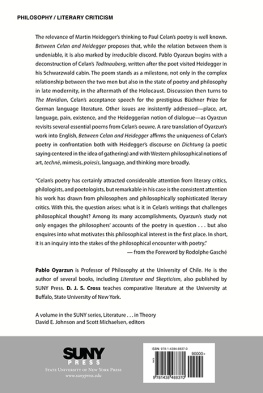
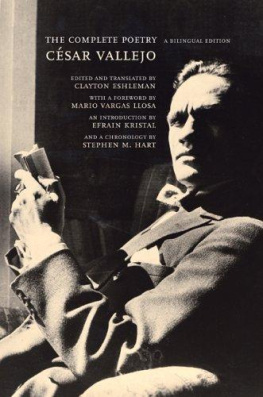
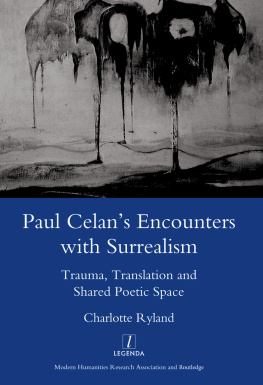
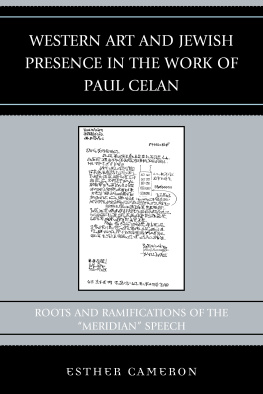
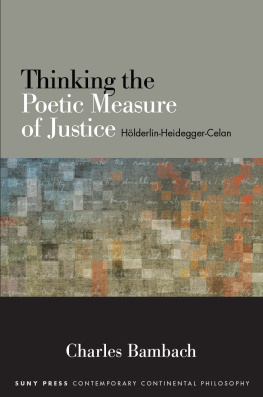
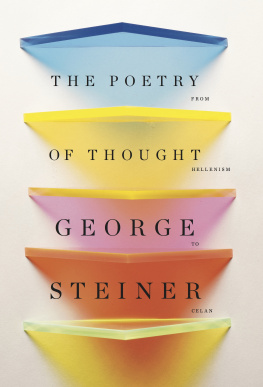
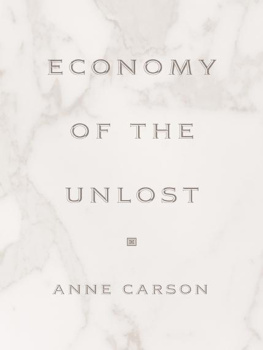
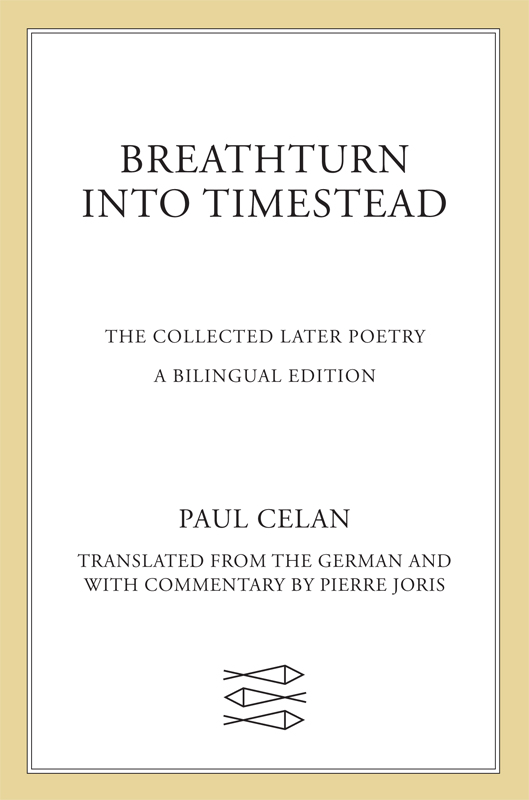
 The author and publisher have provided this e-book to you for your personal use only. You may not make this e-book publicly available in any way. Copyright infringement is against the law. If you believe the copy of this e-book you are reading infringes on the authors copyright, please notify the publisher at: us.macmillanusa.com/piracy. Contents Since his death in 1970, Paul Celans reputation, though already firmly established during his lifetime, has grown exponentially. He is now considered the major German-language poet of the period after 1945, and by some (George Steiner, for example) even as the major European poet of that period.
The author and publisher have provided this e-book to you for your personal use only. You may not make this e-book publicly available in any way. Copyright infringement is against the law. If you believe the copy of this e-book you are reading infringes on the authors copyright, please notify the publisher at: us.macmillanusa.com/piracy. Contents Since his death in 1970, Paul Celans reputation, though already firmly established during his lifetime, has grown exponentially. He is now considered the major German-language poet of the period after 1945, and by some (George Steiner, for example) even as the major European poet of that period.